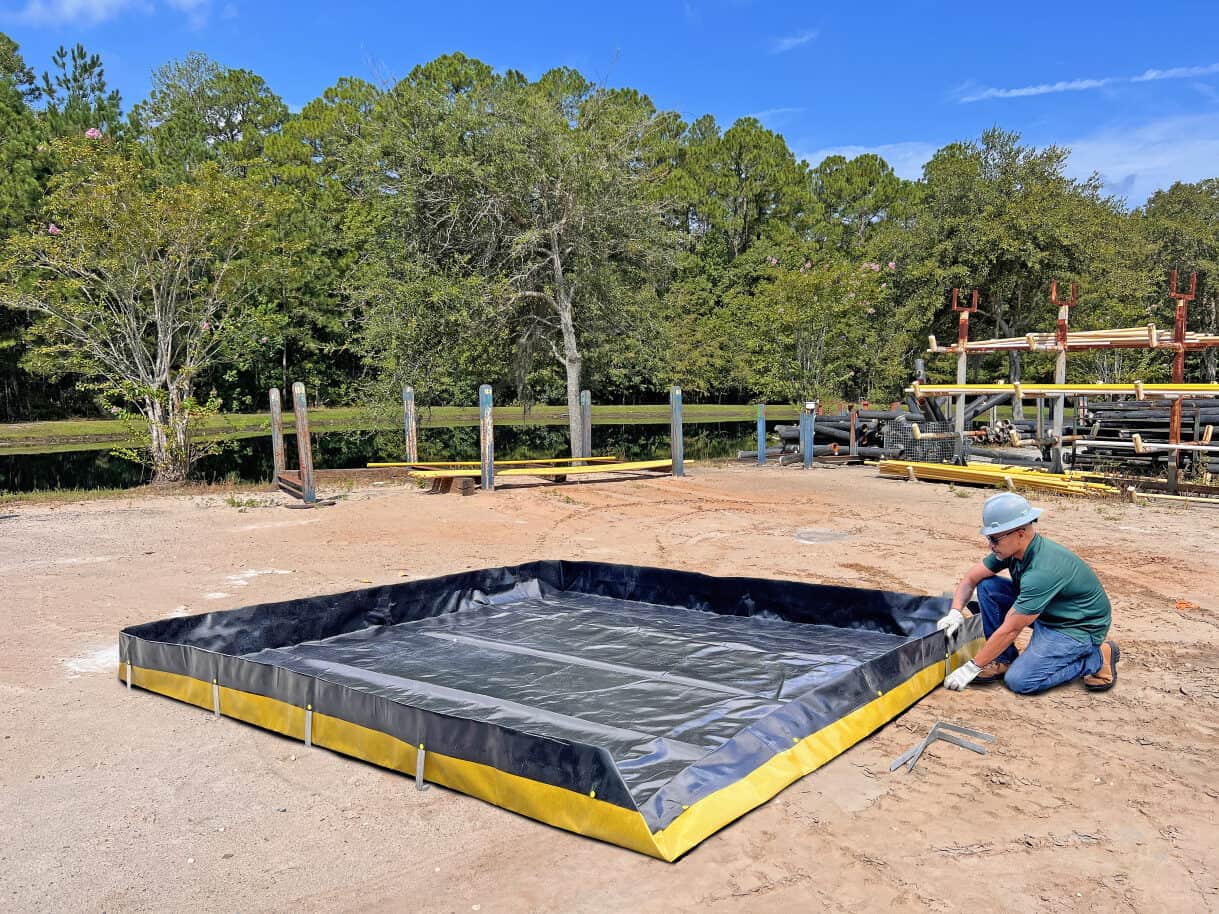
Spill Containment on Land
Click for PRODUCT INFORMATION
How do I use spill containment on land?
Spill containment is a necessary consideration when handling any liquids – edibles and chemicals alike. The type of spill containment required is determined by the site and how liquids are being moved and stored.
Spill containment products are often referred to as bunding. Bunding is a spill containment system which forms a perimeter. This perimeter is raised and will stop liquids from spreading beyond the perimeter. Bunding is installed to create a closed area with raised sides. The capacity of the bunded area can be calculated based on it’s size and wall height. The capacity required for a bunded area depends on the amount of liquids being stored.
WHEN DO I NEED BUNDING?
In general, bunding is required when storing any liquids. Bunding can also be used as secondary containment for equipment that could leak or to capture waste water during wash down or other cleaning activities. There are standards you can refer to for further information regarding regulations and capacity requirements:
- AS 1940 – The storage and handling of flammable and combustible liquids.
- AS 4326-1995 The storage and handling of oxidising agents
- AS 3780-2008 The storage and handling of corrosive substances
- AS/NZS 4452:1997 The storage and handling of toxic substances
What type of bunding should I choose?
The bunding you choose will depend on how you are using it and what liquids you are storing and the types of containers being used. We fabricate bunding that can be retrofitted or added as needed. Floor bunding is for permanent bunding in places such as warehouses. Portable bunding is ideal for temporary storage that can be moved and adapted to the site. The materials you choose for spill containment on land will depend on site conditions, trafficability, the containers the liquids are stored in and the types of liquids the bunding will come in contact with.



























